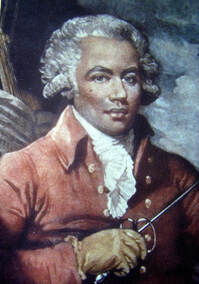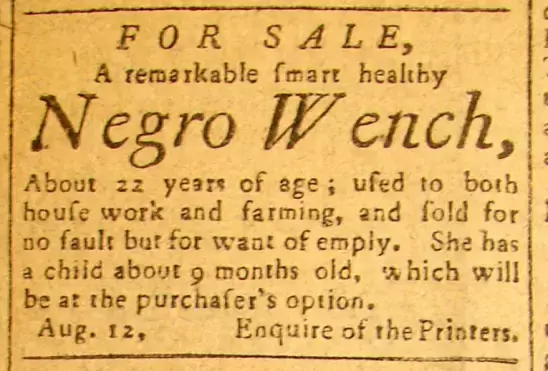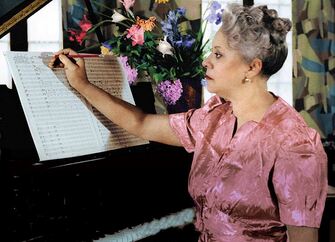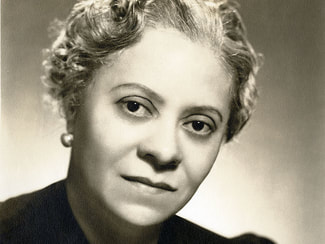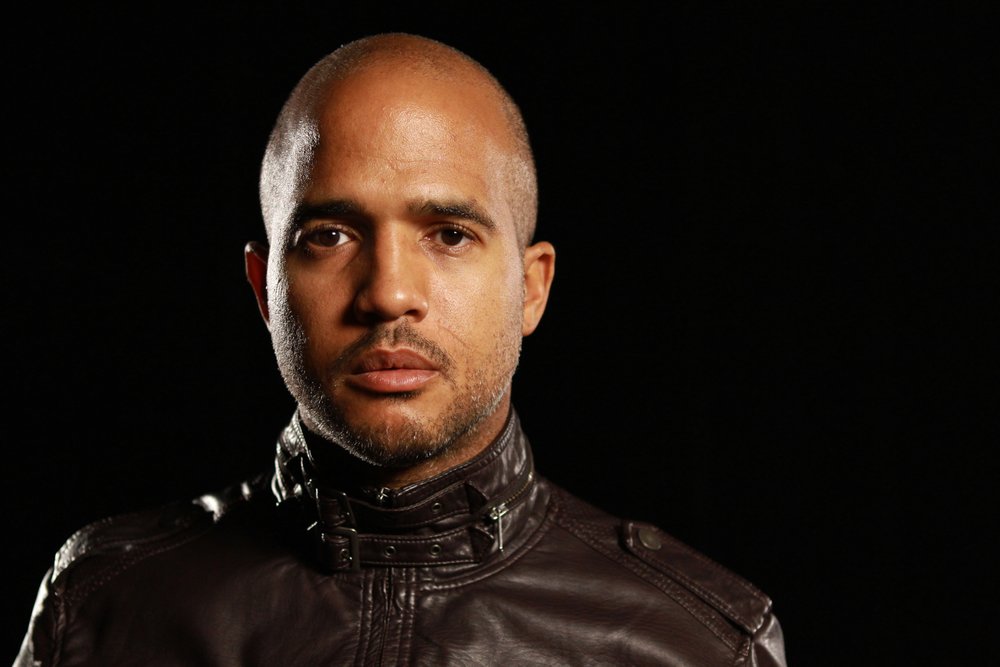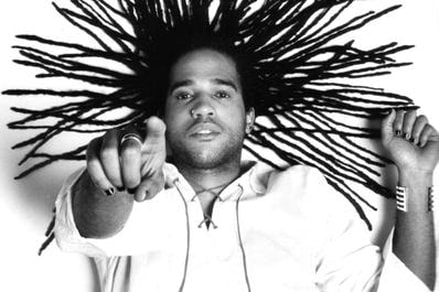String Quartet #4 in F by Joseph Bologne, Chevalier de Saint-Georges
Allegro
Rondo
Rhapsody #1 by Jessie Montgomery
At the Purchaser's Option by Rhiannon Giddens
Folksongs in Counterpoint by Florence Price
Swing Low, Sweet Chariot
Shortnin' Bread
String Quartet #5 "Parks" by Daniel Bernard Roumain (DBR)
1. "I made up my mind not to move."
2. Klap Ur Handz
3. Isorhythmiclationistic
Allegro
Rondo
Rhapsody #1 by Jessie Montgomery
At the Purchaser's Option by Rhiannon Giddens
Folksongs in Counterpoint by Florence Price
Swing Low, Sweet Chariot
Shortnin' Bread
String Quartet #5 "Parks" by Daniel Bernard Roumain (DBR)
1. "I made up my mind not to move."
2. Klap Ur Handz
3. Isorhythmiclationistic
Performed by:
Aaron Packard and Sonya Stith Williams, violins
Catherine Beeson, viola
Jordan Gunn, cello
Aaron Packard and Sonya Stith Williams, violins
Catherine Beeson, viola
Jordan Gunn, cello
Program Notes
Joseph Bologne, Chevalier de Saint-Georges (1745-1799)
Joseph Bologne, Chevalier de Saint-Georges was an Afro-Carribean French composer, violinist, conductor, fencing champion, and military leader. He was a contemporary of Mozart and was often presented as the "Black Mozart". Bologne was born in Guadaloupe, French West Indies and was raised and educated in France. He was the son of wealthy French plantation owner Georges Bologne de Saint-Georges and an enslaved Senegalese woman "Nanon". Joseph Bologne's career and life story is so dramatic and engaging it has inspired research articles, books, and now even a full length movie! He composed music for a relatively short span of his career as a musician, from about 1770 to 1790, yet his output includes a dozen violin concertos, 8 symphony concertantes, 2 symphonies, 6 comic operas, and around 30 additional works for small ensemble.
String Quartet #4 in F is part of a set of 6 string quartets subtitled "Au gout du jours" ("Up to date") composed between 1777 and 1779. String Quartet #4 in F is a two movement work consisting of a lively Allegro first movement and a Rondeau second movement. It lasts about 8 minutes. Although we have performed the music of Joseph Bologne before, String Quartet #4 in F is having its first Loon Lake Live performance this summer.
String Quartet #4 in F is part of a set of 6 string quartets subtitled "Au gout du jours" ("Up to date") composed between 1777 and 1779. String Quartet #4 in F is a two movement work consisting of a lively Allegro first movement and a Rondeau second movement. It lasts about 8 minutes. Although we have performed the music of Joseph Bologne before, String Quartet #4 in F is having its first Loon Lake Live performance this summer.
Jessie Montgomery (1981- )
Jessie Montgomery is an American composer, violinist, mentor, and educator. She is an established and still rising star composer, having received the Leonard Bernstein Award from the ASCAP Foundation and numerous commissions and performances from major ensembles around the world. From Montgomery’s web site: “her music interweaves classical music with elements of vernacular music, improvisation, language, and social justice, placing her squarely as one of the most relevant interpreters of 21st-century American sound and experience. Her profoundly felt works have been described as “turbulent, wildly colorful and exploding with life” (The Washington Post).” She is currently composer-in-residence for Chicago Symphony and on the composition faculty at Bard College. Her music is being commissioned, performed, and recorded by the world's leading orchestras and small ensembles.
In her own words, Montgomery writes "Rhapsody #1 is the first solo violin piece I wrote for myself. It draws on inspiration from the Eugène Ysaÿe solo violin works and is intended to serve as both an etude and a stand-alone work. This piece is intended to be part of a set of 6 solo violin works, each of which will be dedicated to a different contemporary violinist, and inspired by an historical composer." It was first performed at Loon Lake Live on our 2020 virtual series. We have also performed "Strum" for string quartet by Jessie Montgomery and are planning more performances of Montgomery's chamber works in the future.
In her own words, Montgomery writes "Rhapsody #1 is the first solo violin piece I wrote for myself. It draws on inspiration from the Eugène Ysaÿe solo violin works and is intended to serve as both an etude and a stand-alone work. This piece is intended to be part of a set of 6 solo violin works, each of which will be dedicated to a different contemporary violinist, and inspired by an historical composer." It was first performed at Loon Lake Live on our 2020 virtual series. We have also performed "Strum" for string quartet by Jessie Montgomery and are planning more performances of Montgomery's chamber works in the future.
Rhiannon Giddens (1977-)
Rhiannon Giddens is an American composer, singer, songwriter, fiddler, and banjo player. Her compositions have largely been in the old-time, country, and blues traditions of American roots music. She is a founding member of the Carolina Chocolate Drops and has released numerous recordings with them as well as solo albums and collaborative projects including Smithsonian Folkways. She is a Grammy winner, a recipient of the MacArthur "Genius" Award, and the 2023 Pulitzer Prize winner with co-composer Michael Abels for their opera "Omar" based on the autobiography of Omar Ibn Said, an enslaved Muslim-American man brought to Charleston in 1807. Giddens is a study in multiculturalism. Born to a European-American father and an African-American mother with ancestral roots in the Native American Lumbee, Occaneechi, and Seminole tribes, she was raised in North Carolina, practiced and competed in Celtic traditional music, studied opera at Oberlin College, became a proponent and practioner of world folk music, and is now based in Ireland. She is the Artistic Director of Yo-Yo Ma's Silkroad organization.
At the Purchaser's Option was reconfigured in 2016 at the request of the Kronos Quartet as part of their 50 for the Future project. It is an instrumental variation of a song from her album Freedom Highway (Nonesuch, 2017), arranged by Jacob Garchik. Giddens wrote the song after finding a 19th-century advertisement for a 22-year-old female slave whose 9-month-old baby was also for sale, “at the purchaser’s option.” This piece comes from that advertisement, and from thinking about what that woman's life might have been like. This is a first performance of At the Purchaser's Option and of the music of Rhiannon Giddens at Loon Lake Live.
At the Purchaser's Option was reconfigured in 2016 at the request of the Kronos Quartet as part of their 50 for the Future project. It is an instrumental variation of a song from her album Freedom Highway (Nonesuch, 2017), arranged by Jacob Garchik. Giddens wrote the song after finding a 19th-century advertisement for a 22-year-old female slave whose 9-month-old baby was also for sale, “at the purchaser’s option.” This piece comes from that advertisement, and from thinking about what that woman's life might have been like. This is a first performance of At the Purchaser's Option and of the music of Rhiannon Giddens at Loon Lake Live.
At the Purchaser's Option
I've got a babe but shall I keep him
'Twill come the day when I'll be weepin'
But how can I love him any less
This little babe upon my breast
Chorus:
You can take my body
You can take my bones
You can take my blood
But not my soul
I've got a body dark and strong
I was young but not for long
You took me to bed a little girl
Left me in a woman's world
Chorus
Day by day I work the line
Every minute overtime
Fingers nimble, fingers quick
My fingers bleed to make you rich
Chorus
I've got a babe but shall I keep him
'Twill come the day when I'll be weepin'
But how can I love him any less
This little babe upon my breast
Chorus:
You can take my body
You can take my bones
You can take my blood
But not my soul
I've got a body dark and strong
I was young but not for long
You took me to bed a little girl
Left me in a woman's world
Chorus
Day by day I work the line
Every minute overtime
Fingers nimble, fingers quick
My fingers bleed to make you rich
Chorus
Florence Price (1887-1953)
Florence Price was was an American composer and keyboardist. She was born in Arkansas, educated at the New England Conservatory of Music, and spent her career composing, teaching, and playing piano and organ first in Arkansas and then in Chicago. She was highly influential in both the Harlem and Chicago Renaissance circles, including teaching composer Margaret Bonds and continuing to mentor her as a composer and performer. Price is noted as the first African-American woman to have a major work performed by a major orchestra - her Symphony #1 was performed by the Chicago Symphony in 1933. The story of this performance is clouded in racism, as it had to be underwritten in order to be included on a program entitled "The Negro in Classical Music" which itself was part of the "Century of Progress" Chicago World's Fair. More noteworthy was the level of demand for performances of her work as a result of that hearing, including entire programs being devoted to her works and several performances through the WPA Symphony of Detroit, and the Chicago Women's Symphony. After her death Price's music fell out of memory, but thankfully due to a discovery in 2009 of a substantial collection of her works and papers found in her abandoned summer home, performances of Price's music are having a major resurgence.
Folksongs in Counterpoint was composed between 1949 and 1951 as a set of five: Calvary, Clementine, Drink to Me Only With Thine Eyes, Shortnin' Bread, and Swing Low, Sweet Chariot. The original title was "Negro Folksongs in Counterpoint", now called "Five Folksongs in Counterpoint". We performed Price's String Quartet in G in 2018. We are pleased to present the intricate and elevated arrangements of Swing Low, Sweet Chariot and Shortnin' Bread by Florence Price for the first time this summer at Loon Lake Live.
Folksongs in Counterpoint was composed between 1949 and 1951 as a set of five: Calvary, Clementine, Drink to Me Only With Thine Eyes, Shortnin' Bread, and Swing Low, Sweet Chariot. The original title was "Negro Folksongs in Counterpoint", now called "Five Folksongs in Counterpoint". We performed Price's String Quartet in G in 2018. We are pleased to present the intricate and elevated arrangements of Swing Low, Sweet Chariot and Shortnin' Bread by Florence Price for the first time this summer at Loon Lake Live.
Daniel Bernard Roumain (DBR) (1970- )
Daniel Bernard Roumain (DBR) is is a classically trained composer and violinist whose classical music compositions are infused with jazz, hip-hop and rock. He is an outspoken activist and advocate for diversity, equity, inclusion, and access practices, and he uses his composition and performance platforms to do this work. From his website: "DBR is a Black, Haitian-American composer who sees composing as collaboration with artists, organizations and communities within the farming and framing of ideas. He is a prolific and endlessly collaborative composer, performer, educator, and social entrepreneur. “About as omnivorous as a contemporary artist gets” (New York Times), Roumain has worked with artists from J’Nai Bridges, Lady Gaga and Philip Glass to Bill T. Jones, Marin Alsop and Anna Deavere Smith." Currently, he is the first Artistic Ambassador with Firstworks; the first Artist Activist-in-Residence at Longy School of Music; and the first Resident Artistic Catalyst (composer/curator) with the New Jersey Symphony.
String Quartet #5 "Parks" was composed in 2005. It is the last of a set of 5 string quartets each inspired by a civil rights leader: Malcolm X, Martin Luther King, Jr., Adam Clayton Powell, Jr., Maya Angelou, and Rosa Parks. The first movement, "I made up my mind not to move", is a powerful expression of strength and tension represented in a minimalist perpetual motion approach colored by wailing outbursts of downward melodic figures it finishes with a long fadeout. The second movement "Klap Ur Handz" is a celebration of blues as a cultural communication tool. It begins with clapping, a strong blues baseline in the cello, and continues with overlapping melodies in the violin and viola before transitioning into a unified chorus call over clapping and stomping which then devolves into overlapping powerful blues expressions throughout the group. The final movement "Isorhythmiclationistic" begins with a somber cello solo leading to a duet which opens into a fuller yet still inward sound from the quartet. The harmonies progress slowly and deliberately through hyper expressive terrain that is in turns darkness and light, anger and tenderness. This a first performance of String Quartet #5, "Parks" and of the music of DBR at Loon Lake Live.
String Quartet #5 "Parks" was composed in 2005. It is the last of a set of 5 string quartets each inspired by a civil rights leader: Malcolm X, Martin Luther King, Jr., Adam Clayton Powell, Jr., Maya Angelou, and Rosa Parks. The first movement, "I made up my mind not to move", is a powerful expression of strength and tension represented in a minimalist perpetual motion approach colored by wailing outbursts of downward melodic figures it finishes with a long fadeout. The second movement "Klap Ur Handz" is a celebration of blues as a cultural communication tool. It begins with clapping, a strong blues baseline in the cello, and continues with overlapping melodies in the violin and viola before transitioning into a unified chorus call over clapping and stomping which then devolves into overlapping powerful blues expressions throughout the group. The final movement "Isorhythmiclationistic" begins with a somber cello solo leading to a duet which opens into a fuller yet still inward sound from the quartet. The harmonies progress slowly and deliberately through hyper expressive terrain that is in turns darkness and light, anger and tenderness. This a first performance of String Quartet #5, "Parks" and of the music of DBR at Loon Lake Live.
